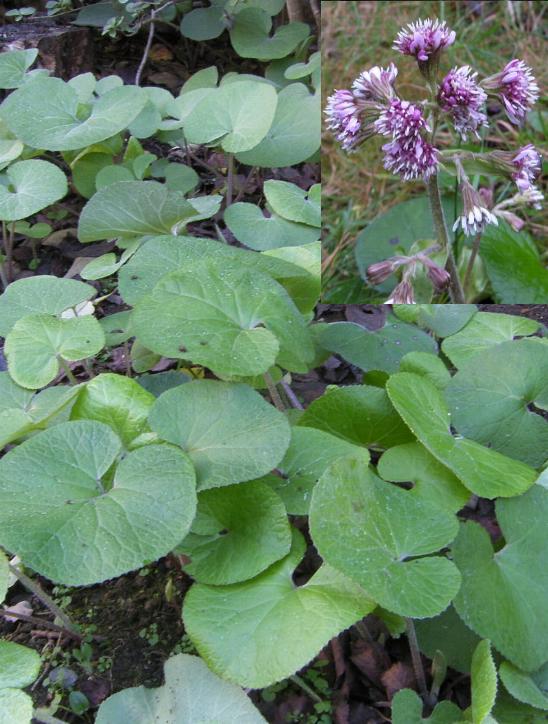Winter HeliotropeScientific Name: Petasites fragrans syn. P. pyrenaicus, Tussilago fragrans |
This perennial is a native of the central Mediterranean, introduced to England in 1806 as an ornamental, but it is now widespread throughout the British Isles, though more localised in Scotland. It is found in hedge banks, by roadsides streams and on waste ground, preferring moist conditions. It can be invasive in the garden as it spreads by branching underground stems - similar to its close relative Colt's-foot.
It is dioecious with male and female flowers on different plants. Only the male plants appear to have been brought to the British Isles so there are no seed produced and spread is all vegetative by expansion of the rhizomes or fragments transported to new sites.
The leaves are bright green and are roundish with a slightly serrated edge, with the same colour underneath. They are held aloft on a stout purplish stalk which arises from the underground stem.
The flowers appear from November to February and when the foliage is still present, which is unique among the Petasites species where the flowers usually emerge in early spring before the new foliage. They are quite attractive heads of compound, mauve flowers with short petals and have a pleasant vanilla-like fragrance, held on a stout stalk.
It can be a problem to remove once established; uproot as much of the underground growth as possible and repeat on any regrowth. Repeated close mowing will eradicate it so it not a problem in the lawn, but it will re-emerge from adjoining areas if it is not eradicated there.
Use a systemic or selective weedkiller when the foliage is growing well in mid-summer and repeat the following spring if new leaves appear.
